Highlights
- In India, 31 million of waste gets dumped into the landfills
- India is among the top 10 waste generatig countries in the world
- An easy option to deal with our waste woes is composting
Urban India is the world’s third-largest generator of garbage, almost 70-75% of which remains untreated. Imagine 3 million trucks filled with garbage – that’s how much untreated garbage India generates every day, causing our landfills to get choked with waste. While the government looks for solutions, as it races to meet the goal of a Swachh India by 2019, there are many ways in which we, too, can contribute. An easy way in which we can recycle some of our own waste at home is composting.
Also Read: Waste Management: How India Is Drowning In Garbage
Composting – An Effective Step Towards The Green Future
Composting is nature’s way of recycling and is one of the simplest ways to manage your waste. What’s great is that it can be done at home. Composting involves decomposing everyday kitchen waste into a rich soil known as compost. Basically, when you compost your organic or kitchen waste you are returning nutrients back into the soil, as a result, the cycle of life continues.
Many people are hesitant to try their hand at composting because they think it is a cumbersome process. There are questions about space issues, odour, bugs, and worms, all of which go on to make composting seem far more complicated than it really is. If you are planning to take your first steps towards waste management and adopt composting, here’s a simple 5 step guide for you:
Step 1: Identify The Type Of Composting You Want To Do
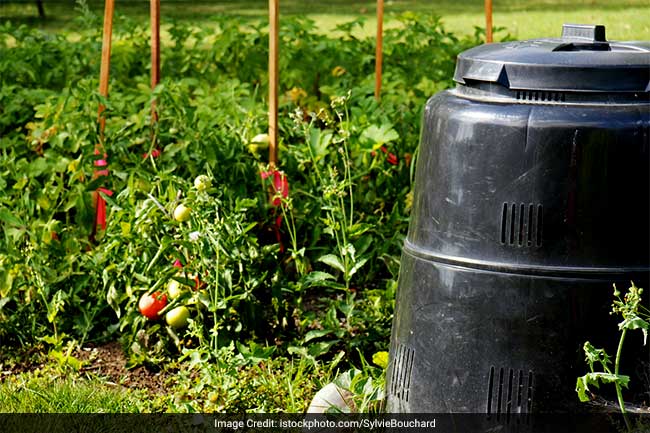
If you don’t have the outdoor space, then you can start the process of composting inside your home as well
Though the best place to start composting is outdoor, like your balcony, terrace or roof, you can even begin composting in the kitchen itself if you really strapped for space. It can be started on your tabletop or sink.
Step 2: Start Segregating Your Waste
Start separating your edible kitchen waste like vegetable peels, fruit peels, small amounts of wasted cooked food etc. in a container. In another container start collecting dry waste like dried leaves sawdust, newspaper chunks, packaging material etc.
Note: Both containers should be properly closed with a cover. This will protect the waste from bugs, flies, and worms.
Knowing what to compost is important. Here’s a list of things you can use for the process of composting.
Watch out for the items you cannot compost like Ashes (coal and charcoal), coloured paper, leftover meat or bones, lemon, onion or citrus peels, non-biodegradable or other toxic items.
Step 3: Construct Your Composting Bin
Take a container as big or as small as you want, depending on your requirement. Drill around 4–5 holes around the container at different levels so as to let some air in easily.
Make sure the bottom of your container is layered with soil. Keep a tray or newspaper below your container and allow room for spills if any. If you are wondering what type of a container one should have then the answer is simple – from a bucket to a normal dustbin to a garden pot, anything and everything will work.
Note: The depth of the bottom layer of soil will depend on the size of container. For example, for a big bin, the soil layer should be four inches.
Step 4: Start The Process Of Composting
Now comes the process of adding the waste in to the bin – Start adding food waste in layers alternating with wet waste. Maintaining the wet/dry waste balance is important, so add a handful of shredded newspaper when you add food/vegetable scraps. For instance, if you put one cup of food waste, then you should add one cup of dry waste too which should be a mix of dry leaves, sawdust, newspaper scrap. Once a week you will also need to mix the compost with half a scoop of new soil.
Expert Advice: If you want to fast track the process of composting then add semi-composted soil to your compost.
Step 5: Keep In Mind
Make sure your compost is well covered. In case the bin starts to smell it means the balance of waste is off. Don’t worry, all you have to do is add more newspaper or simply make extra holes.
After every few days, use a rake to give the pile of waste a quick turn. This will provide enough aeration for the waste to decompose successfully. If you think the compost is too dry, simply sprinkle some water so that it is moist.
Happy Results
With time and a little patience, you will be able to see results within 2-3 months. Your waste will turn into compost that is dry, dark brown and crumbly and smelling of earth. This compost can then be used in your garden or potted plants.
Also Read: Turn Kitchen Waste To Compost: Amitabh Bachchan’s New Swachh Message
Knowing The Many Benefits Of Composting
Did you know by segregating, recycling and composting, a family of 4 can reduce their waste from 1000 Kg to less than 100 kg every year? Multiply that with our population and you can immediately see the immense benefits of composting. The other advantages are that apart from building healthy soil, composting also cultivates healthy plant growth. It also eliminates the need of using fertilizers or chemicals in your garden. Moreover, composting help in reducing wastage, as a result, the waste is diverted from our already overflowing landfills.


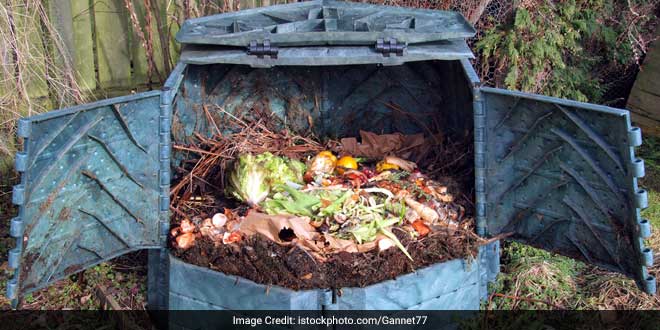
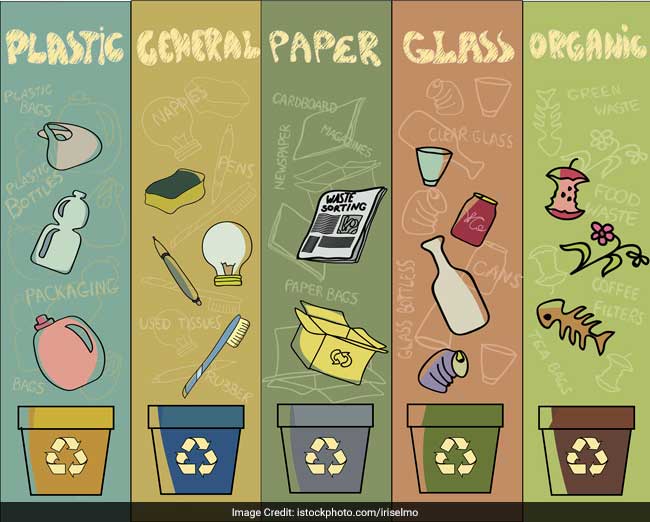

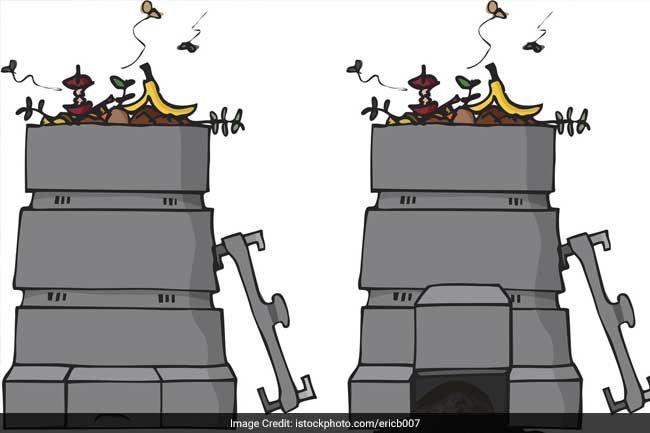
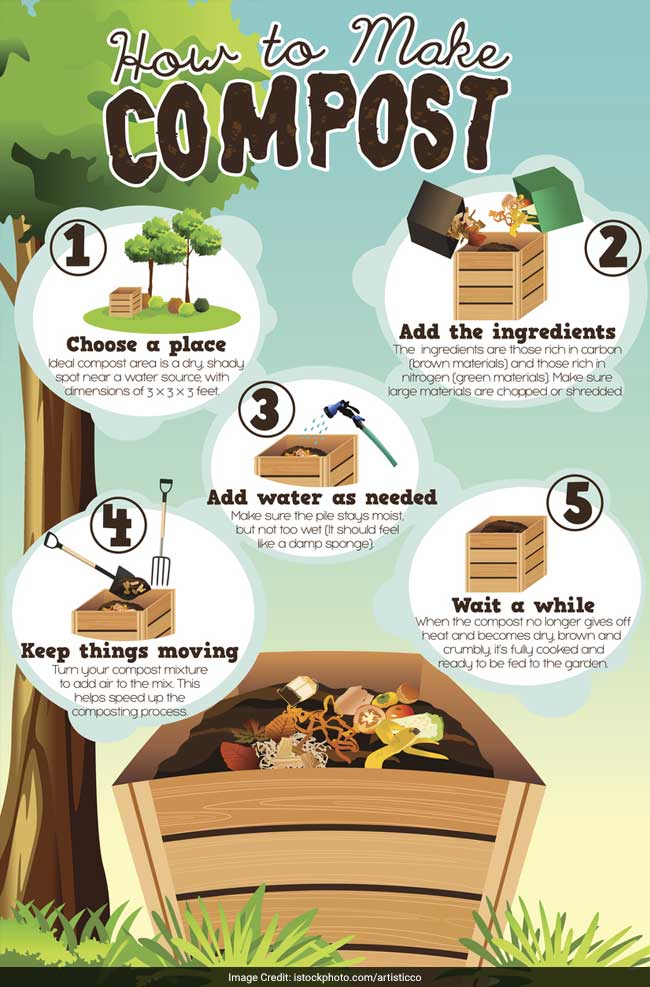


























Swami Shantanand
June 27, 2019 at 1:39 pm
where can one get the composting bins/containers? Many smaller towns in the USA supplied these to the houses. However, it may be worth a while to obtain such bins with approved quality and design for a nominal price benefiting the environment and solving many problems of garbage disposal. The composting bins must be of high quality and carry a price so that people do not just take it for nothing/misuse them.